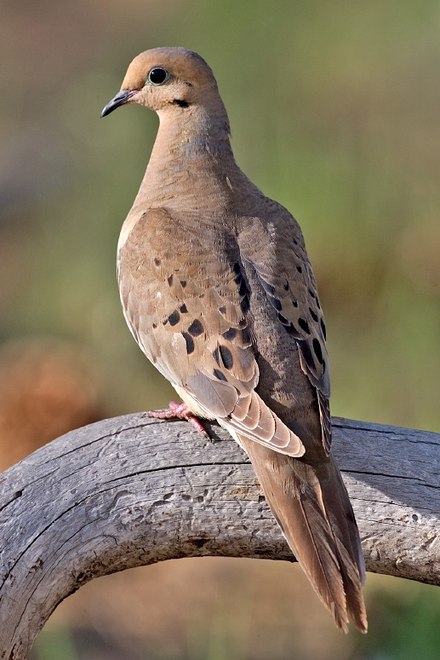 |
| Baltic Sea seagulls |
In Texas, due to the climate difference, wildlife - fauna and flora - is obviously not exactly the same as in Poland. It is interesting to see birds, plants and animals new to me. I not only enjoy watching them but also learning something about these unknown (to me) species.
In our neighborhood there was an area with a very old wood, trees and bushes untouched by humans for ages. With a little stream, it was a habitat and home for various kinds of creatures including many birds. Their songs and chirps were heard from early morning till the night. I loved listening to their voices. Especially the cardinal's calls were quite distinguished. Since the wood was not far from our house, I could observe the birds sitting in the trees and flying around our yard.
Here are some of them which I really liked.
1. My favorite one - Northern Cardinal. They sing so beautifully!
2. Blue Jay - size: 10-11" (25.5/28cm)
3. Northern Mockingbird - size: 9-10" (23-25.5cm)
The mockingbird can not only imitate other birds but also incorporate many various sounds into their repertoire (eg. barking dogs). Both males and females are alike in appearance.
4. House Sparrow - size: 51/2-6" (14/15cm)
 |
| Male House Sparrow |
My favorite city bird which cousins live in Poland also. The male has a gray crown and gray rump. The female is dingy gray. Size: 51/2-6" (14/15cm).
5. Ruby-throated Hummingbird
It was so great having all the beautiful singers around! The area was also full of other musicians - katydids, crickets and similar instrumentalists which played their loud music days and nights.
Great Crested Flycatcher - size: 8-83/4" (20.5/22cm)
All in all, with no trees around, most of the birds were gone. So it was nothing to be sorry about leaving the place when our migrating time came.
Some other birds which are quite popular here and do not occur in Poland:
- Mourning Dove - they are quite lovely. A couple of them visits our patio quite often. I like them too! They migrate to South America in September. Size: 10-12" (25.5/30cm)
 |
| Mourning Doves are monogamous birds |
Interesting though maybe not that cute:
- Common Grackle - size: 10-12" (25.5/30.5 cm)
 |
| From Wikimedia Commons CC BY-SA 3.0 |
- Great-tailed grackle - size: 101/2-181/2" (26.5/47cm)
Quite noisy guys. Usually there are a lot of them around supermarkets, looking for something to eat. "In Mexico, where it is known as the chanate or zanate, there is a legend that it has seven songs. 'In the creation, the Zanate having no voice, stole its seven distinct songs from the wise and knowing sea turtle. You can now hear the Zanate's vocals as the Seven Passions (Love, Hate, Fear, Courage, Joy, Sadness, and Anger) of life.'" (citation from wikipedia)
Credits: pictures of American birds
Northern Cardinal: By Stephen Wolfe from Columbus, OH, USA (Northern Cardinal I Uploaded by Snowmanradio) [CC BY 2.0 (http://creativecommons.org/licenses/by/2.0)], via Wikimedia Commons;
Blue Jay: By Mdf (Own work) [GFDL (http://www.gnu.org/copyleft/fdl.html) or CC-BY-SA-3.0 (http://creativecommons.org/licenses/by-sa/3.0/)], via Wikimedia Commons;
Northern Mockingbird: By Captain-tucker (Own work) [CC BY-SA 3.0 (http://creativecommons.org/licenses/by-sa/3.0)], via Wikimedia Commons;
House Sparrow: By Passer_domesticus_on_rose.jpg: PewuCom derivative work: Totodu74 (Passer_domesticus_on_rose.jpg) [CC BY 3.0 (http://creativecommons.org/licenses/by/3.0) or GFDL (http://www.gnu.org/copyleft/fdl.html)], via Wikimedia Commons;
Ruby-throated hummingbird: public domain, U.S. Fish and Wildlife Service
Great crested flycatcher:By DickDaniels (http://carolinabirds.org/) (Own work) [CC BY-SA 3.0 (http://creativecommons.org/licenses/by-sa/3.0) or GFDL (http://www.gnu.org/copyleft/fdl.html)], via Wikimedia Commons;
Great-tailed grackle: (Photograph taken by Patrick Coin) [CC BY-SA 2.5 (http://creativecommons.org/licenses/by-sa/2.5)], via Wikimedia Commons.


.jpg/800px-Cardinalis_cardinalis_-Columbus%2C_Ohio%2C_USA-male-8_(1).jpg)





No comments :
Post a Comment